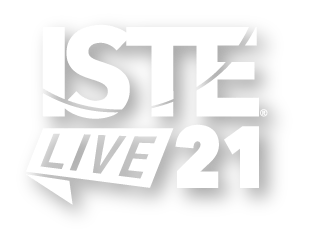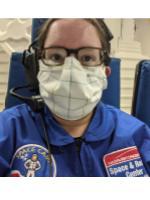

Building a STEAM Pacing Guide for Elementary Schools |
Participate and share : Poster
Hilary McKinney Allie Schultze
Learn about the process of building and creating a STEAM pacing guide and curriculum framework for PK-6 elementary schools. Explore the research and planning involved and how collaboration with all grade levels and subjects was integral to the creation and implementation of the pacing guide.
| Audience: | Curriculum/district specialists, Library media specialists, Principals/head teachers |
| Skill level: | Intermediate |
| Attendee devices: | Devices not needed |
| Topic: | Curriculum planning & evaluation |
| Grade level: | PK-5 |
| Subject area: | STEM/STEAM |
| ISTE Standards: | For Educators: Learner
|
This session will focus on the process of creating a pacing guide for a PK-6 elementary school in south Alabama that integrates elements of science, technology, engineering, art, and math (STEAM) across the content spectrum. As our county begins to adopt STEAM education more and more into our pedagogy, we were faced with the challenge of how to support teachers who didn't a.) teach science explicitly (for organizational reasons) or b.) were unfamiliar with STEAM related pedagogy. With a certification in STEAM offered by the state and awarded to a school, the task became to change the entire culture of the school to support STEAM education and the skills that come with it. Fairhope West Elementary School will become a STEAM certified school in 2020, demonstrating the dedication to our students and to preparing them for the future using authentic learning tasks. Research in current trends in STEAM education, as well as thorough analysis of the ISTE Standards for Students and accompanying resources were used to crosswalk with the state standards of all elementary subjects were used in the creation of this guide. The goal of the project was to provide teachers, regardless of grade or subject, with a framework for integrating STEAM education into their classroom and help create a school-wide culture of inquiry and authentic learning. A STEAM professional learning team was established to collaborate on this project. The team met regularly to discuss strategies, activities, and pedagogy related to STEAM education. Lessons and activities were designed to build inquiry in students, along with communication and collaboration skills, as well as creativity. Technology is embedded throughout the guide to support learning and enhance outcomes whenever possible. Collaboration on this project was done in person and virtually using the Google Drive Suite, which helps to enhance workflow and functionality of collaborating. A variety of digital tools are incorporated into lessons from video creation and reflection such as FlipGrid and Adobe Spark, as well as 3D design programs such as TinkerCad to support product planning and design. Success will be observed not only in improved assessment scores in all subject areas, but through a change in the school culture that promotes STEAM related skills and topics across all subjects.
Make, Learn, Succeed: Building a Culture of Creativity in Your School by Mark Gura
Makerspaces in School: A Month-by-Month School-wide Model for Building Meaningful Makerspaces by Lacy Brejcha
STEM Lesson Essentials: Integrating Science, Technology, Engineering, and Mathematics by Jo Anne Vasquez, Cary Sneider, Michael Comer
Alabama Dept of Education Digital Literacy and Computer Science Course of Study
Alabama Dept of Education Course of Study for: English/Language Arts, Science, Math, Social Studies
Code.org
Interactive Design foundation
The Tinker Lab at the Exploreum, San Francisco

